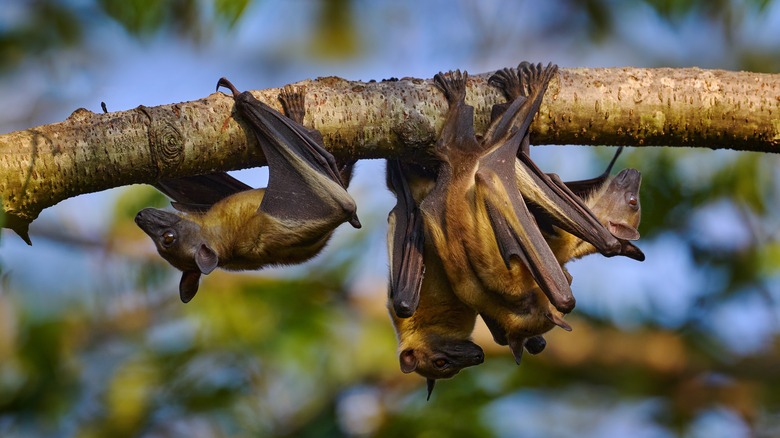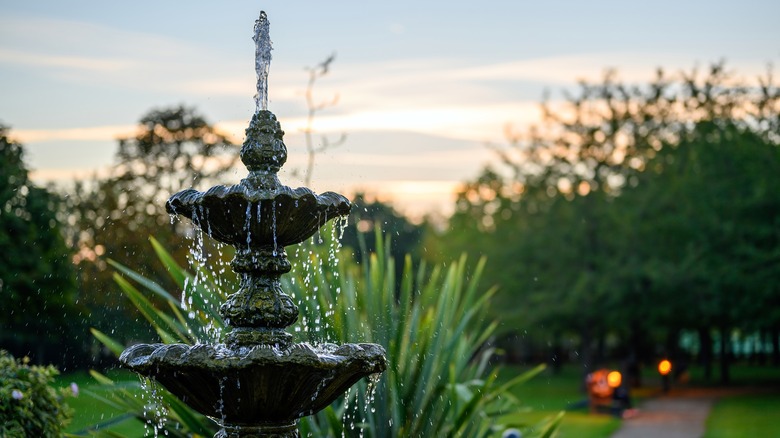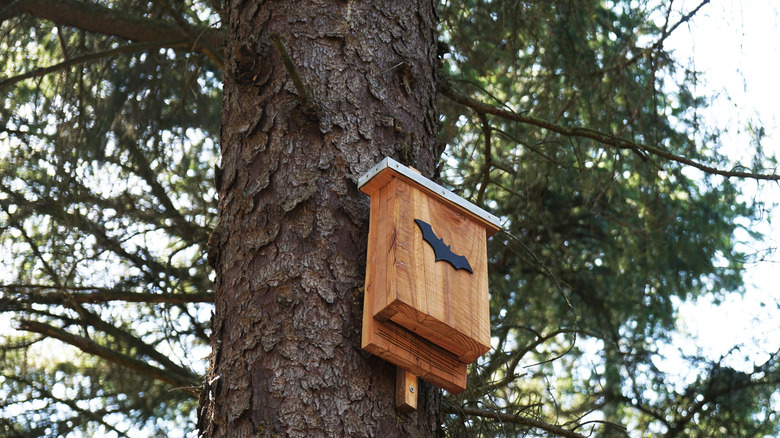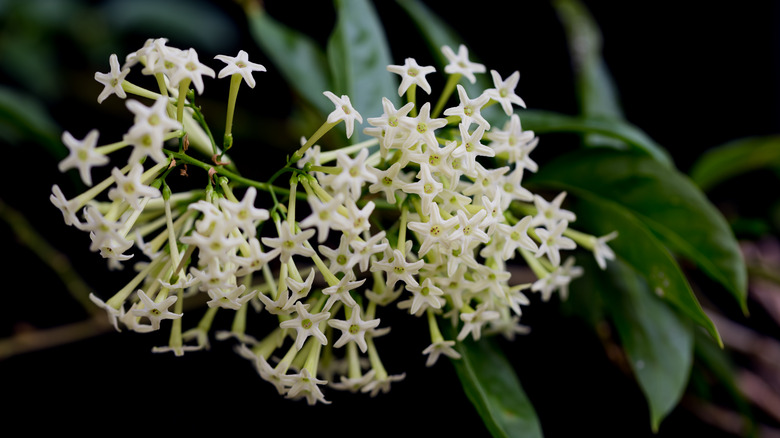How To Attract Bats To Your Yard And Why You'd Want To
Your yard and garden might come under attack from pests like bugs and insects throughout the year. Instead of allowing your flowers, vegetables, and other plant life to fall victim to these invaders, why not try something preventative? Bats are a great form of pest control, and their droppings even act as fertilizer for your yard, according to Good Housekeeping. Some species can eat up to 1,200 bugs per hour (Animal Wildlife Control). Keep in mind that each species varies in insect consumption, but the fewer pests in your garden, the better.
People tend to have a negative view of bats. They are commonly associated with rabies; however, only 6% of these creatures that have been tested carried the disease. While they get a bad reputation, these mammals are beneficial to your outdoor ecosystem. They can get rid of the insects that destroy flowers, herbs, and plants and provide nutrient-rich droppings to help flora and fauna thrive.
Provide a water source
There are several ways you can begin attracting bats, and one of the most important is providing a water source. According to World Birds, bats seek out ponds or other natural bodies of water, and their habitats can be found within a quarter mile of a water source. If your home doesn't sit near a natural water source, you can install a fountain or bird bath. They eat insects attracted to the moisture and use the water to replenish themselves. Always install a source that allows bats to perch or gives them an exit route so they don't get stuck.
The best time to attract bats is in the spring or summer since they enjoy warm weather. During the winter months, bats migrate to warmer climates or hibernate. Providing them with shelter and areas where they can roost in the warmer months will encourage them to take up residence in your yard.
Build a bat house
Bat houses are a great way to bring these creatures to your yard. To make one of these shelters, World Birds says you will need to use non-toxic wood and provide grooves for the bats to latch on. There should also be vents along the sides of the house and passageways so they can move between the chambers. You can purchase a bat house, too, but check that it is BCI-certified before buying one.
World Birds says that your bat house should be at least 2 feet tall, 3 inches deep, and 1 foot wide. Place it in an area with a lot of sunlight and try painting it black to help keep the heat in. The interior should be around 100 degrees Fahrenheit during the warmer months, according to The National Wildlife Federation. Hang the house 15 feet above the ground on a pole or structure rather than a tree. While they like to roost in trees, poles are less accessible to predators. Don't move the house once it is set up, either; bats like coming back to a familiar location.
Incorporate night-blooming plants
Planting night-blooming plants are another great way to attract bats to your yard, per World Birds. Insects are sure to seek out these flowers or herbs, so bats will have plenty of food during their evening flights. Bats use both sight and sound to locate bugs, making it easy for them to eat pests even after dark. According to Sussex Wildlife Trust, incorporating evening primrose, white jasmine, and honeysuckle into your garden will entice these mammals to take residence. Not only will your daytime plants thrive, but your yard will look and smell just as nice at night with the new additions.
You can also add more outdoor lighting, which will attract insects during the nighttime hours. With so many bugs flying around, bats will see the space as an all-you-can-eat buffet, hanging around your yard for a feast. Leave the lights on overnight to keep this ecosystem thriving, or turn them on for a few hours after dark to give the bats a chance to get a few bugs in before you go to bed.



